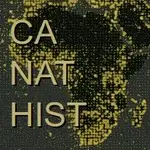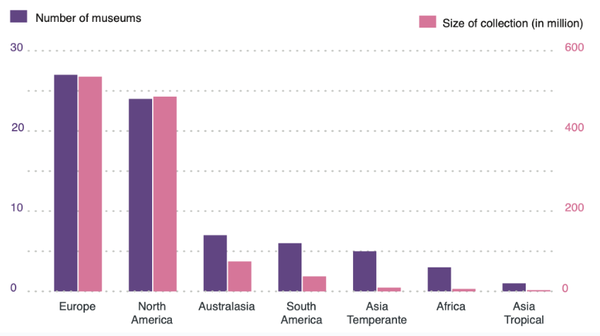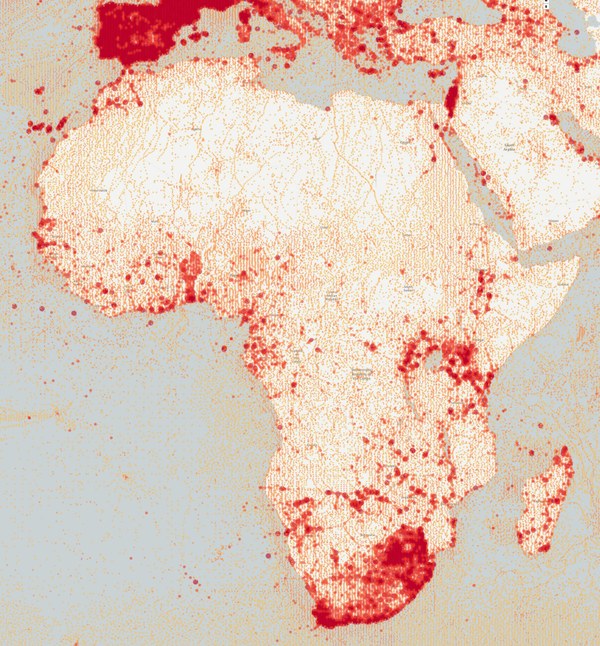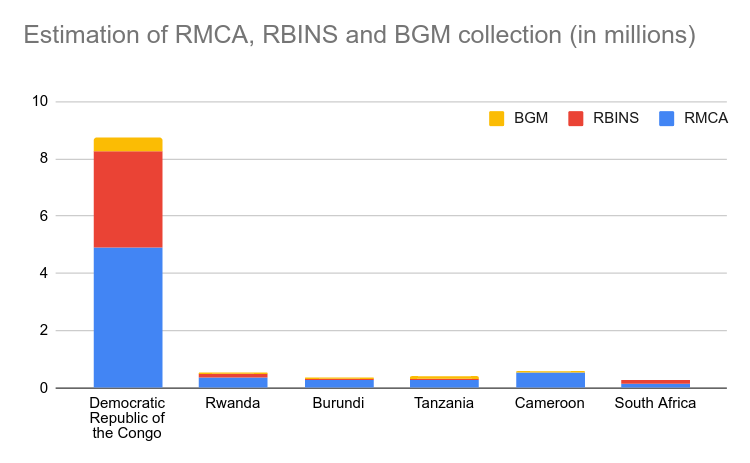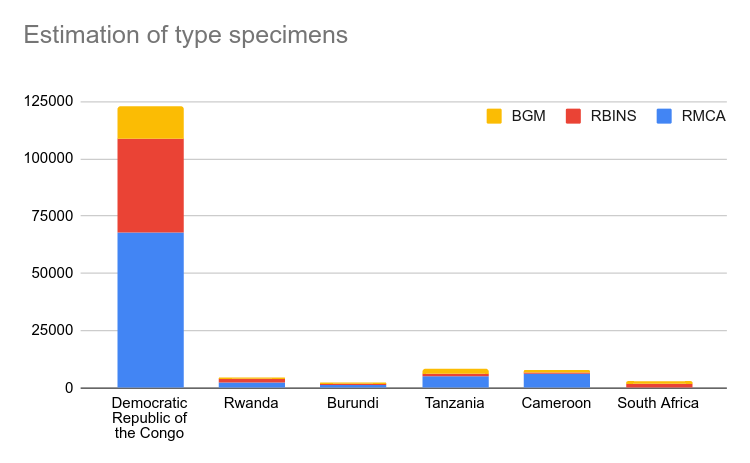Welcome to CANATHIST
|
Collections of natural history reflect both the unique worldwide biodiversity of past and present life and the geological history of the Earth. It is estimated that European Natural history (NH) collections contain up to 1 billion specimens. When used at their full potential, NH collections are able to contribute to understanding and mitigation of critical challenges such as biodiversity loss, climate change, invasive species or the vectors of diseases. Africa houses a large part of the terrestrial biodiversity but suffers from the lack of African Natural History History collections and is under-represented at the global scale .
Moreover, the distribution of the occurences and specimens available using the GBIF portal displays the lack of data related to Central Africa while it is a hot spot of biodiversity. This stresses on the importance to gather and share all data related to this region.
The collections of the AfricaMuseum (RMCA), the Royal Belgian Institute of Natural Sciences (RBINS) and the federal collection of Meise Botanic Garden (MBG) form together the richest collection related to Central Africa due to the colonial history of Belgium.
Estimation of about 10 million specimens
Estimation of about 100.000 type specimens
The collections of the RMCA and RBINS are moreover concerned by the law (loi du 3 juillet 2022) concerning the process of restitution of colonial collections and the draft bilateral agreement between Belgium and the Democratic Republic of Congo. The provenance study and the digitization of these collections is therefore a priority for this unique heritage and will contribute to the Belgian federal input in the setup of the DiSSCo European research infrastructure. A significant part of the FSIs natural history collections related to Central Africa have been made during the colonial period in the framework of scientific expeditions (e.g. Expeditions of the National Parks of Congo). The results of these field works were often divided between RMCA, RBINS and MBG. After the independence of the Congo, a part of the collections were also prepared for repatriation to Congo and stored in the Africa Museum, still waiting for a formal agreement with a host institution in DRC. The goal of this insfrastructure is to produce the most complete inventory of the concerned collections among the Belgian DiSSCo institutions and non-DiSSCo scientific institutions as research infrastructure, make a provenance study, prioritize the digitization of the collections (data, metadata and digital specimens) and share all information, digital specimens and archives with the competent authorities, institutions and citizen communities of DRC, Burundi and Rwanda, using a specific collaborative infrastructure and/or dedicated offline tools. There is a need, not only to give access or provide to overseas countries the FAIR access to the digital collections related to their own country but also to offer to them, as well as to the FSIs and other users/clients of Belnet a set of integrated open source tools (Collection Management systems, 2D Images server, 3d object server, Map server and Annotation server (text and image) ) allowing them to contribute to international infrastructures within the setup of EOSC. This digital collection will also contribute to the ESFRI DiSSCo infrastructure with unique data which are today strongly under-represented in the world’s biodiversity inventory. This support to DiSSCo will help the 2 Federal scientific Institutions to participate in this community. Finally, the developed technical infrastructure will offer a generic and powerful set of tools to the other members of the Belgian DiSSCo communities and to the other FSIs allowing them to contribute to the different international networks/infrastructures related to the cultural and scientific heritages. CANATHIST aims to reuse, optimize and share tools developed during previous Open Source projects (Agora 3D, DIGIT, NaturalHeritage.be) or existing already in the Belnet portfolio and will include a strong component of capacity building and participation of non funded partners in the integration of the mentioned tools through specific training and technology transfer. |
